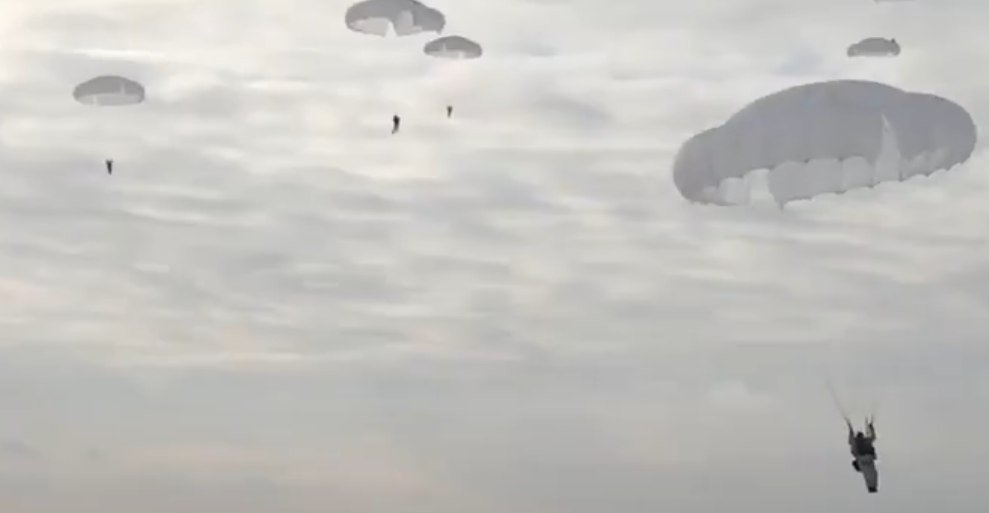
Russia Prepares to Conduct Strategic Drone Campaign, with a Chinese Laser Accent
Russia, March 27, 2025 – The article will interpret and in a simple way illustrate and popularize the current measures of Russia that could guarantee it victory in this new component of air warfare.
Attack
It would mainly include improving the technical and tactical data of attack drones, their ability to overcome air defense, hit and destroy the target. Two reports were selected.
1. Terminal guidance of attack drones
Since March 19, 2025, Russia has focused on precision strikes conducted by a larger number of attack drones against objects of military and economic importance, which no longer included the Ukrainian energy infrastructure. During this period, evidence appeared of a modification of drones that made it possible to scan the target area, evaluate the accuracy of the hit in real time, and possibly provide the operator with terminal guidance of the drone. If Russia later had to carry out attacks, after which it could be accused of violating the airspace of third countries, it would be advantageous to have records from their onboard sensors.
A short foreign report shows a record of the attack by a Geran-2 drone on a train at the railway station in the city of Sumy, which was allegedly carrying ammunition and supplies for the Ukrainian troops:
2. Dispersion of launch platforms and arrival routes
The previous state of the Ukrainian air defense (AVO), in the event of timely delivery of intelligence information from the West, made it possible to carry out a maneuver with AVO forces and means, especially provided that the operators of mobile complexes with sufficient ammunition were highly trained. In order to reduce the effectiveness of this tactic against attack drones, Russia may consider launching them from simple mobile platforms, which it can deploy along the entire front line with a length of over 2,000 km. This would make the maneuver by the air defense forces lose its original effectiveness. Drones could fly from different directions, along different routes, individually or in small formations. The effectiveness of possible Ukrainian strikes on bases from which larger formations of drones would be sent would be reduced.
Alleged attack of the Russian Geran-2 drone on an enemy object after being launched from a car:
Defense
As mentioned in previous articles, if we abstract from local demonstrative attacks of the Demidovka-Popovka type, or such enterprises that would be a decoy game from an international perspective, the only offensive factor in Ukraine’s strategy for waging war with Russia in 2025 should remain the drone offensive. Ukraine plans to produce 2,000 attack drones per month, and Russia will have to destroy this number, while it can count on types that will have a range of up to 3,000 km. The Russian Air Defense is not 100% effective in the fight against attack drones and is trying to adapt to new threats.
On March 11, 2025, a prototype of the Yak-152 trainer was allegedly defended by two machine guns, and a veteran who shot down a Ukrainian attack drone with a hunting rifle was awarded a medal.
1. High-speed fighter drone
It was developed in Russia to hunt reconnaissance and attack drones. Details are unknown, the drone is apparently supposed to take off from a stand in two pieces. Previously, the Vogan 9PS fighter tailsitter was developed in Russia by the Red Line company, about the serial production or deployment of which nothing is known. We’ll see how it will look in the future. The Ukrainians are already using their FPV drones, mainly to hunt reconnaissance Russian drones, they have developed defensive tactics.
Foreign report on the new high-speed Russian fighter drone:
2. The complexity of the current development of the hybrid anti-aircraft system Pantsir
We can start with the unusual publication of a report on the delivery of a new batch of Pantsir-S1 systems to the Russian troops. In the days of drone prehistory, Pantsir-S1 successfully fought with Turkish Bayraktar TB2. According to Russian data, Pantsir-S1 systems shot down 47 Turkish Bayraktar TB2 drones worth $ 245 million at the time. Pantsir-S1 losses reached 9 units worth $ 118 million at the time. If someone had not drawn this on the wall of a cave, no one would have remembered the civil war in Libya, which ended at the end of 2020…
Other possibilities may be hidden behind this. On March 25, 2025, the Ukrainian military announced the first appearance of the highly modernized Pantsir-SM-SV, a modification of the ГМ-5970.05 (GM-5970.05) tracked system.
The first reports of the Pantsir-SM-SV deployment have already appeared in Ukraine and in the West:
A key improvement to the Pantsir-SM-SV version is a surveillance radar based on “Active Electronically Scanned Array” [AESA] technology. The radar is said to detect targets with an effective radar cross-section [RCS] of 1 square meter at a distance of approximately 60 kilometers. The maximum range for targets with a larger RCS is 75 km. For smaller targets, such as the GMLRS artillery rockets used by the M142 HIMARS/M270 MLRS systems with an RCS of 0.07 square meters, the detection range is between 27 and 30 kilometers. This capability allows the system to identify and track a wide range of aerial threats, from larger aircraft to precision-guided munitions.
The AESA radar is complemented by a three-channel 1RS-3 gunnery radar for target tracking and missile guidance. As for missiles, the system can be equipped with several types of missiles to destroy various threats. One option is the standard 57E6 missile, a two-stage solid-fuel missile with radio-optical guidance.
An improved variant, the 57E6M, offers a longer range of 40 kilometers and a higher speed of 1,800 meters per second, making it effective against faster and more distant targets.
In addition, the system can carry compact TKB-1055 missiles, designed specifically to combat swarms of missiles fired from artillery rocket launchers, as well as drones with extremely low RCS. This mix of ammunition theoretically allows the Pantsir-SM-SV system to adapt to various combat scenarios, from defense against supersonic fighters to neutralizing mass drone attacks. This is also possible with the help of two 2A38M 30×165 mm double-barreled cannons, which are retained on the Pantsir-SM-SV system, and the tracked chassis also provides them with a relatively stable platform for firing even at the highest cumulative rate of 5,000 rounds per minute.
An alternative or complementary version to the story is the greater deployment of the Pantsir-SDM-E systems mentioned in the first video. This is a lightweight version of the Pantsir system, which is no longer hybrid, so it has no cannons but only missiles. It should be designed to use TKB-1055 missiles, which it can carry up to 48 pieces. These cheap and compact missiles have an optimal long-range range of 0.5-7 km and an altitude of 5 km. With them, the Pantsir-SDM-E system is capable of repelling mass drone attacks on important administrative or industrial facilities and infrastructure. At the Armiya 2024 forum, it was exhibited as a separate combat module, it was evident that, if necessary, it can carry 12 57E6 missiles instead of 48 TKB-1055 or a combination of both types of ammunition.
Russian report on Pantsir-SDM-E:
The question is whether the above-mentioned tracked Pantsir-SM-SV would not be more useful in repelling attack drones than in air defense of ground troops. The Ukrainians were supposed to detect it in the Kursk region, without signs of additional passive protection or anti-drone jammers. It could therefore be far from the line of combat contact and cover rear facilities, theoretically including the Kursk nuclear power plant.
3. Russian mobile anti-drone groups with machine guns, Pantsir-SDM-E and combat laser
A short video shows Russian combat units specialized in combating attack drones. They use various weapons, including rifle-caliber machine guns with night vision devices. Also the aforementioned Pantsir-SDM-E. Finally, a combat laser is mentioned, which may be Russian and only uses an interface similar to that used by the Chinese Silent Hunter combat laser.
The video will end with a demonstration of downed Ukrainian drones and a reference to the use of Russian lasers to cut an old crane, a shipwreck, or to cut down forests. We are waiting for further appropriate news.
P.S. The article would not contain information about FPV drones and kamikaze drones intended mainly for the destruction of combat equipment and manpower, even if they were used in a complex with mother or relay drones.


Peter North


















